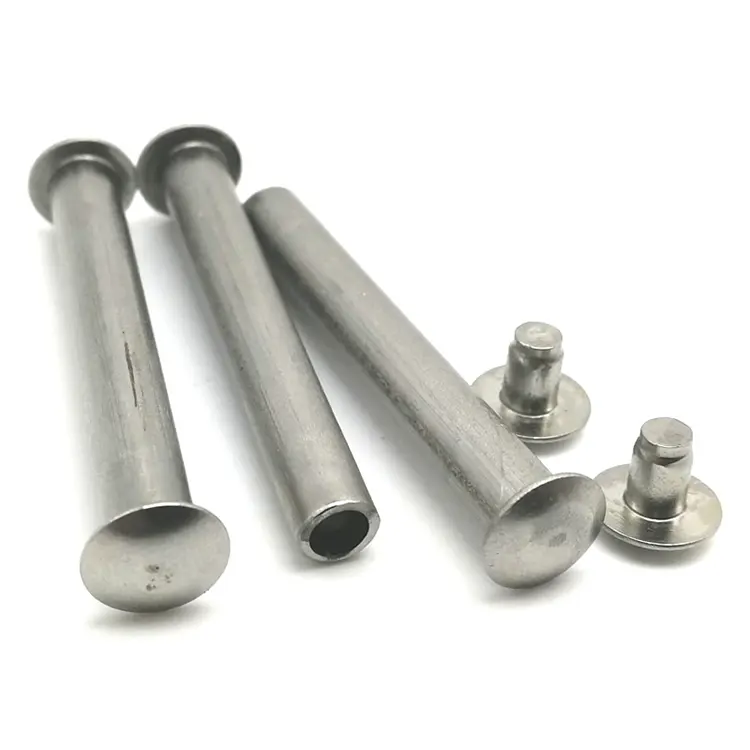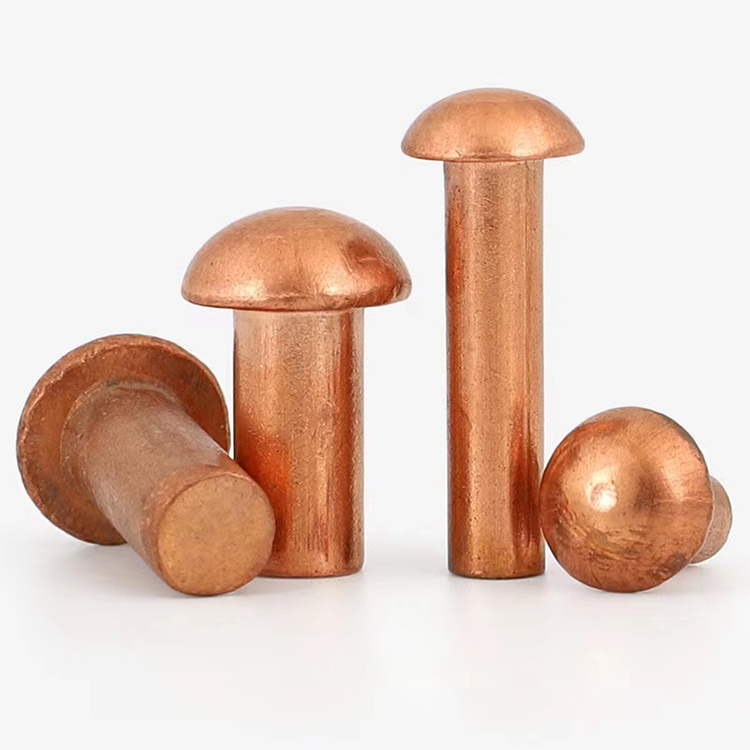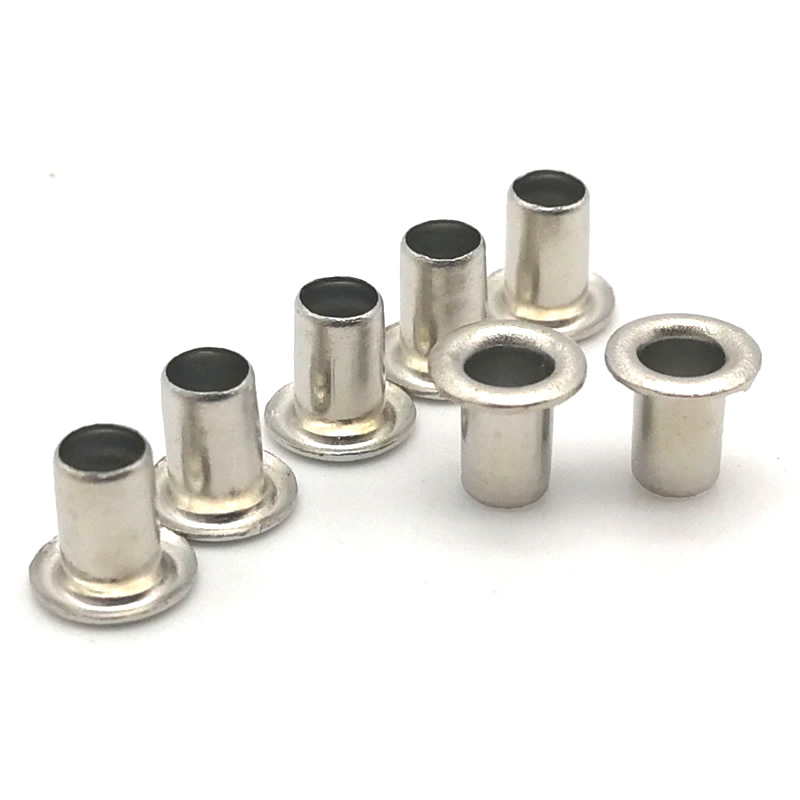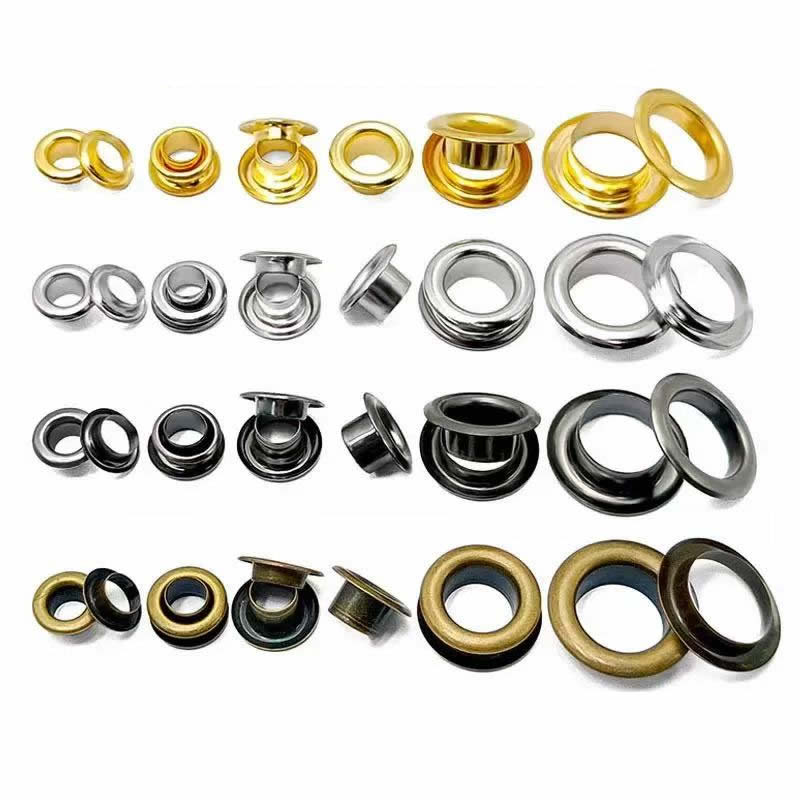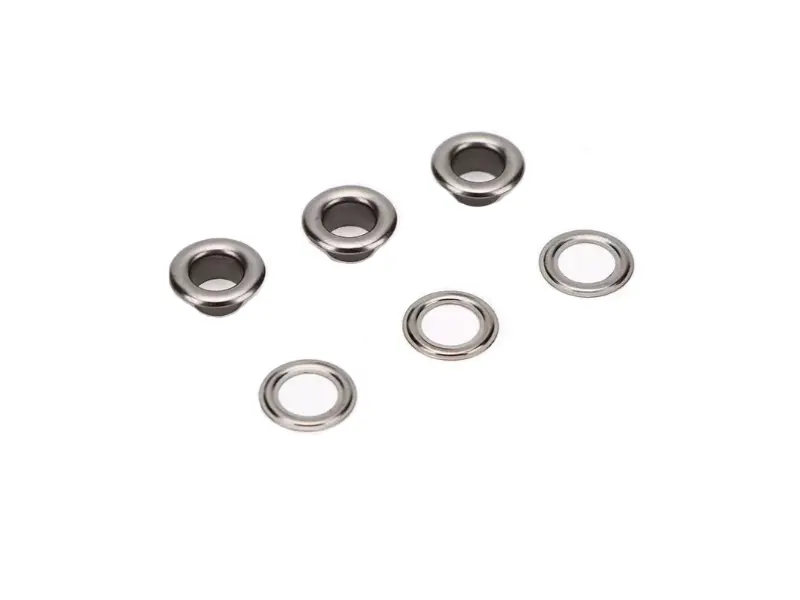Ojales
Notin a reputable manufacturer in China, is willing to offer you Eyelets. We promise to provide you with the best after-sale support and prompt delivery.
Eyelets are characterized by quick installation, stable performance, and high reliability. Compared to other fasteners, eyelets are significantly cheaper per unit and have a wide range of applications. They are similar with tubular rivets, but made from different technics and machines.Eyelets are made from deep drawn technics, and tubular rivets are made from tube.
What is an eyelet?
An eyelet primarily consists of a cap and a shank. The cap is typically round or oval, offering a large surface area for easy hammering during installation. The shank is of moderate length and diameter, ensuring the rivet securely connects two or more components. The primary function of this type of eyelet is to connect and secure components, ensuring a secure connection without damaging the material.
What types of eyelets are there?
Based on the material used, they can be categorized as brass eyelets, steel eyelets, stainless steel eyelets, aluminum eyelets, and copper eyelets. Different eyelets have different characteristics depending on their material properties.
Brass eyelets: They offer excellent electrical conductivity and corrosion resistance, making them widely used in various electrical connections and fastening applications.
Steel eyelets: steel offers high strength and hardness, and are relatively inexpensive. However, steel has poor corrosion resistance and is prone to rusting, especially in humid environments. Therefore, the application range of iron eyelet rivets is relatively limited.

Stainless steel eyelets: Characterized by their strong corrosion resistance, they are often used for fastening food-grade products. However, due to the material's relatively high hardness, production is challenging, resulting in a relatively high unit price.

Aluminum eyelets: Used for fastening shoelace holes, belt holes, and windbreaker drawstrings, they allow for quick donning and doffing, while enhancing aesthetics.
Copper eyelets: Due to their excellent electrical conductivity, they are often used for connecting and securing electronic products.

What surface treatments are available for eyelets?
Eyelets are hot-dip galvanized and polished to create a protective layer on the surface that provides antistatic, corrosion-resistant, and anti-allergenic properties. Copper eyelets come in a variety of colors, including white nickel, polished tin, imitation gold, antique bronze, matte nickel, bronze, zinc, and silver.
Some customers also prefer to have the eyelet head powder coating to match their color with the overall design and prevent oxidation.

- View as
Ojal Acero
Somos Nuote Metals, ubicados en Dongguan. Nuestra fábrica se especializa en la producción de acero para ojales. Llevamos muchos años trabajando con ojales de acero. Este tipo de acero está fabricado para ser resistente y fácil de moldear. Procesamos acero en láminas delgadas o bobinas. Luego lo cortamos y le damos forma de ojales. Nuestro acero con ojales es limpio y liso. No tiene asperezas. Hacemos muchos tamaños con este acero para ojales. Se comprueba la calidad de cada pieza. Muchos clientes compran nuestros productos de acero con ojales. Confían en la fuerza y el remate. También podemos personalizar el acero con ojales para pedidos especiales.
Leer másEnviar ConsultaOjal de acero
Hola desde Dongguan, China. Somos Nuote Metals. Aquí fabricamos ojales de acero resistentes. Nuestra fábrica produce ojales de acero todos los días. Utilizamos buen material de acero. Este acero es grueso y duradero. Fabricamos ojales de acero en muchos tamaños. Algunos son pequeños. Algunas son muy grandes. Nuestro equipo revisa cada ojal de acero. Miran cada pieza con atención. Muchos clientes compran nuestros ojales de acero una y otra vez. Les gusta nuestra calidad. Confían en nuestros productos. Trabajamos duro para fabricar buenos ojales de acero para todos.
Leer másEnviar ConsultaOjales para pancartas
Somos Nuote Metals de Dongguan, China. Fabricamos ojales para pancartas publicitarias. Nuestra fábrica produce ojales para pancartas desde hace muchos años. Utilizamos materiales resistentes para fabricar nuestros ojales para pancartas. El latón y el acero son nuestros principales materiales. Hacemos ojales para pancartas en diferentes tamaños. Los carteles pequeños utilizan pequeños ojales para carteles. Los carteles grandes necesitan ojales grandes. cada Nuestros trabajadores revisan el ojal de la pancarta antes del envío. Se aseguran de que cada pieza sea perfecta. Muchas empresas de publicidad utilizan nuestros ojales para pancartas. Les gusta nuestra calidad y buen precio. Podemos hacer muestras rápidamente para nuevos clientes.
Leer másEnviar ConsultaOjales para botas
Fabricamos ojales para botas todos los días aquí en Nuote Metals en Dongguan. Los ojales son los fuertes anillos de metal que se ven en las botas. Los cordones pasan por ellos. Fabricamos nuestros ojales para botas con materiales resistentes. Necesitan durar mucho tiempo. Los producimos en diferentes tamaños y acabados. Algunos son brillantes, otros son mate. Todos ellos están hechos para ser duraderos.
Leer másEnviar ConsultaOjales de acero inoxidable 316.
En nuestras instalaciones de Dongguan, Nuote Metals fabrica ojales duraderos de acero inoxidable 316. Este material es especial porque resiste muy bien la oxidación. Llevamos muchos años fabricando ojales de acero inoxidable 316. Estos ojales son fuertes y pueden durar mucho tiempo. Los fabricamos en varios tamaños. Algunas son pequeñas para productos delicados. Algunos son grandes para uso intensivo. Nuestro equipo revisa cada ojal de acero inoxidable 316. Garantizan que cada pieza esté suave y limpia. Muchos clientes eligen nuestros ojales de acero inoxidable 316. Confían en la calidad y durabilidad. Podemos proporcionar muestras en unos pocos días.
Leer másEnviar ConsultaOjales de remache
Un ojal de remache es un pequeño cierre en forma de anillo. Está diseñado para colocarse en un orificio y luego su borde se pliega hacia abajo para mantener unidos los materiales. Nuote Metals en Dongguan es una fábrica confiable para fabricar estas piezas útiles.
Leer másEnviar ConsultaWhat are the main applications for eyelets?
Eyelet rivets are widely used in the construction, automotive, marine, aviation, and electronics industries.
In the construction industry, eyelet rivets are used to connect various metal components, such as steel beams and columns.
In the automotive, marine, and aviation industries, eyelet rivets are used to connect various materials, such as aluminum alloys and titanium alloys.
In the electronics industry, eyelet rivets are used to connect various metal and non-metallic materials, such as metal plates and plastic sheets.
What tools are used to rivet eyelets?
Eyelet rivets can be riveted using either manual or electric riveting pliers. Manual riveting pliers are a common tool and are generally suitable for riveting small eyelets. Electric riveting pliers are suitable for riveting large eyelets and large quantities.
What preparations are required before riveting?
Preparation before riveting includes cleaning the surface of the material being riveted and selecting the appropriate rivet hole diameter. Cleaning the surface of the material being riveted removes surface dirt and grease, ensuring a secure joint. Selecting the appropriate rivet hole diameter can prevent cracking or loosening during riveting.
What precautions should be taken when riveting?
1. The installation position of the eyelet rivet must coincide with the centerline of the rivet hole.
2. The eyelets shank should be perpendicular to the surface of the material being riveted during riveting.
3. The eyelet head must remain horizontally stable.
4. The depth of the eyelet hole should be equal to the sum of the rivet shank length and the length of the eyelet pressure riveting portion.
5. The riveting force should be appropriate, neither too high nor too low, depending on the thickness and properties of the material.
6. After riveting, the eyelets quality should be inspected for signs of broken eyelets or foreign matter.
Conclusion
Eyelet rivets are a versatile rivet fastener that can be widely used to connect various metal sheets and dissimilar materials. Thorough preparation is required before riveting, including selecting the appropriate rivet hole diameter and cleaning the surface of the material being riveted. During riveting, factors such as the riveting force and hole depth should be carefully considered to ensure a high-quality connection.

